Menu
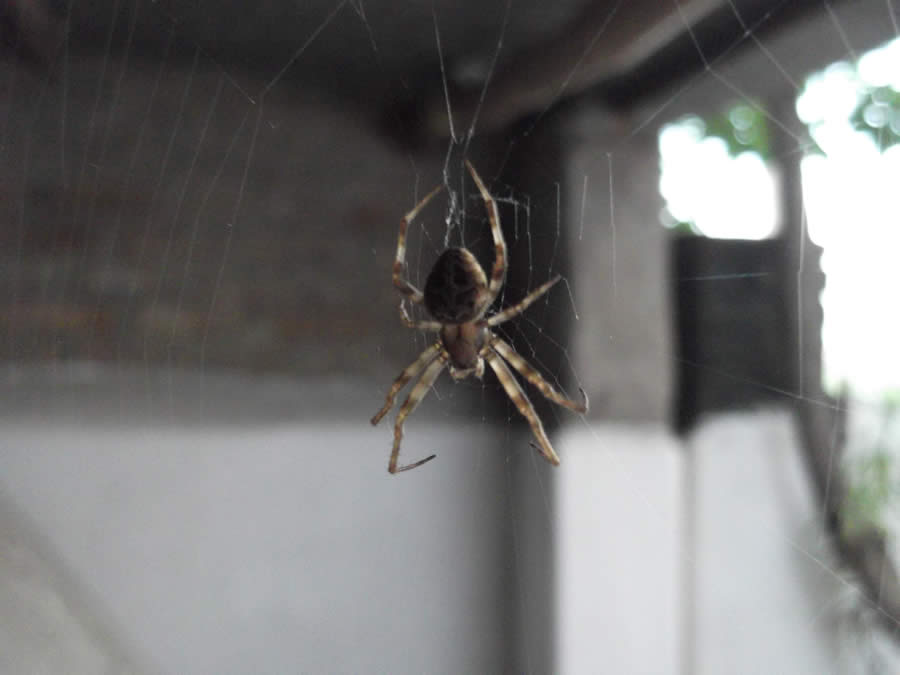
People fear or dislike spiders but, for the most part, spiders are beneficial because of their role as predators of insects and other arthropods, and most of them cannot harm people. Spiders that might injure people for example, black and brown widows generally spend most of their time hidden under furniture or boxes, in woodpiles, corners, or crevices. The spiders commonly seen out in the open during the day are unlikely to bite people.
Remember that spiders are primarily beneficial and their activities should be encouraged in the garden. Pesticide control is difficult and rarely necessary. The best approach to controlling them in and around the home is to remove hiding spots for secretive spiders such as black widows and regularly clean webs off the house with brushes and vacuums.

Spiders may enter homes and other structures through cracks and other openings. They also may be carried in on items like plants, firewood, and boxes. Regular vacuuming or sweeping of windows, corners of rooms, storage areas, basements, and other seldom used areas helps remove them and their webs. Vacuuming them can be an effective control technique because their soft bodies usually do not survive this process. Indoors, a web on which dust has gathered is an old web that is no longer being used by a spider.
In indoor storage areas, place boxes off the floor and away from walls whenever possible to help reduce their usefulness as a harborage. Sealing the boxes with tape will prevent them from taking up residence. Clean up clutter in garages, sheds, basements, and other storage areas. Be sure to wear gloves to avoid accidental bites. Outdoors, eliminate places for spiders to hide and build their webs by keeping the area next to the foundation free of trash, leaf litter, heavy vegetation, and other accumulations of materials. Trimming plant growth away from the house and other structures will discourage them from first taking up residence near the structure and then moving indoors. Outdoor lighting attracts insects, which in turn attracts spiders. If possible, keep lighting fixtures off structures and away from windows and doorways. Sweep, mop, hose, or vacuum webs and spiders off buildings regularly. Insecticides will not provide long-term control and should not generally be used against spiders outdoors.
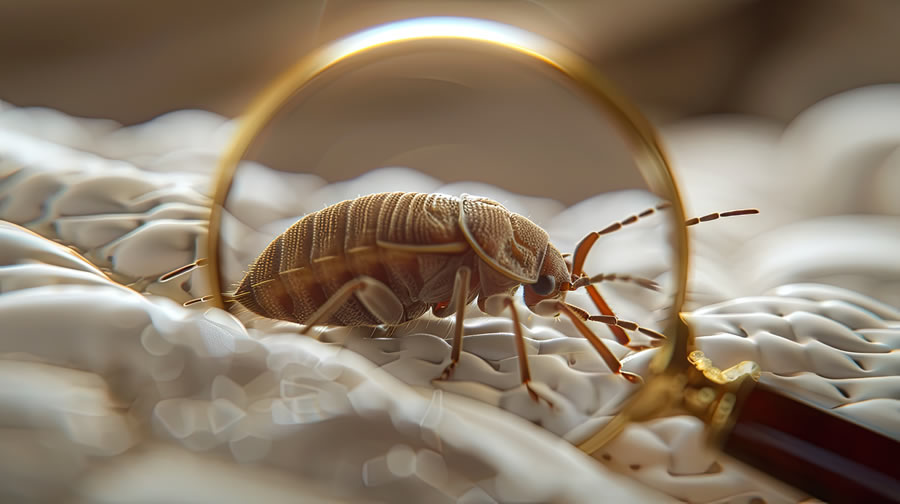
Bed Bug
When bed bugs invade, they disrupt your sense of peace, making your own bed feel like a battleground. These tiny pests are notorious for their resilience and rapid reproduction. At…

Commercial
Whether you manage a restaurant, office space, retail store, or warehouse, pests can quickly become a nightmare that threatens your reputation, finances, and compliance with health codes. At Wheeler's Pest…
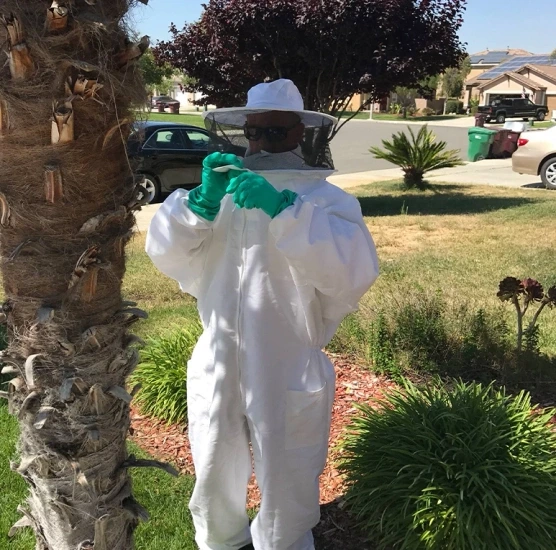
Bee Removal
Bees are vital to our ecosystem, but when they invade your home or yard, they can quickly pose a real danger. Whether it's a buzzing hive in your attic or…

Spiders
People fear or dislike spiders but, for the most part, spiders are beneficial because of their role as predators of insects and other arthropods, and most of them cannot harm…
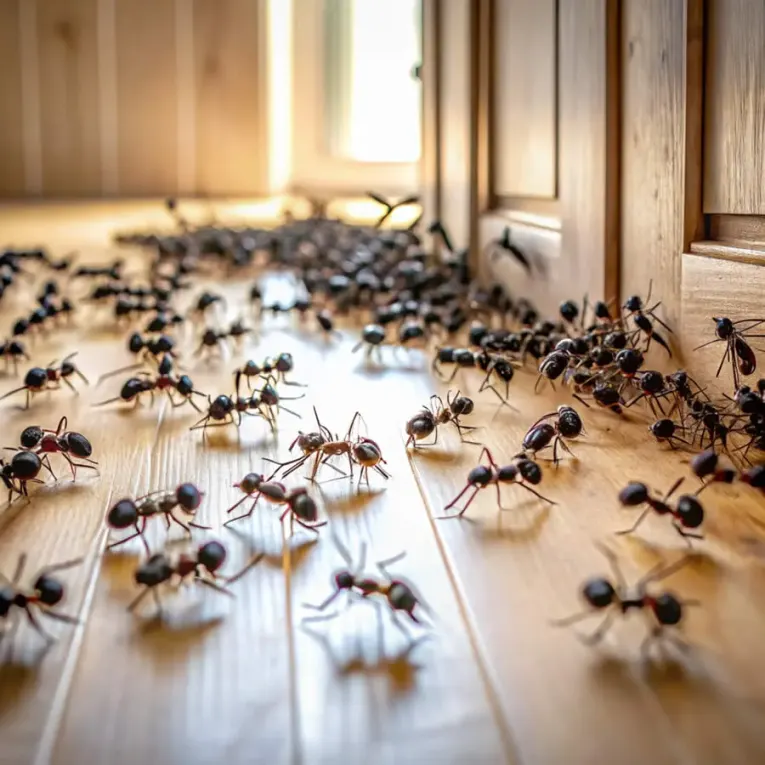
Ants
Have you found ants trailing through your kitchen or nesting in your walls? The good news is you don’t have to live with these persistent pests. Whether you’re dealing with…
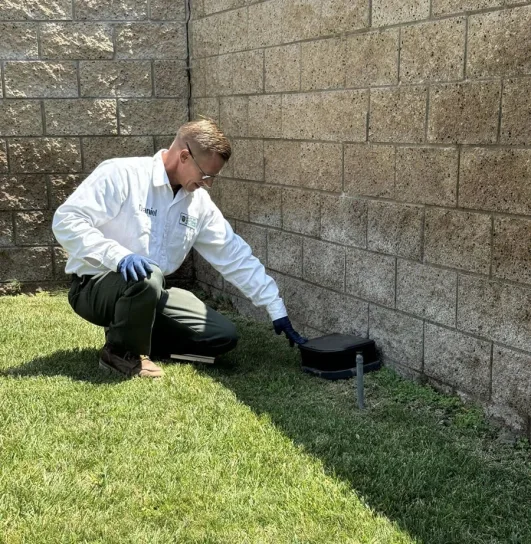
Rat & Mice
Rats and mice might be small, but the problems they create can be enormous. These unwelcome guests can turn your cozy home into a nightmare if left unchecked. If you've…
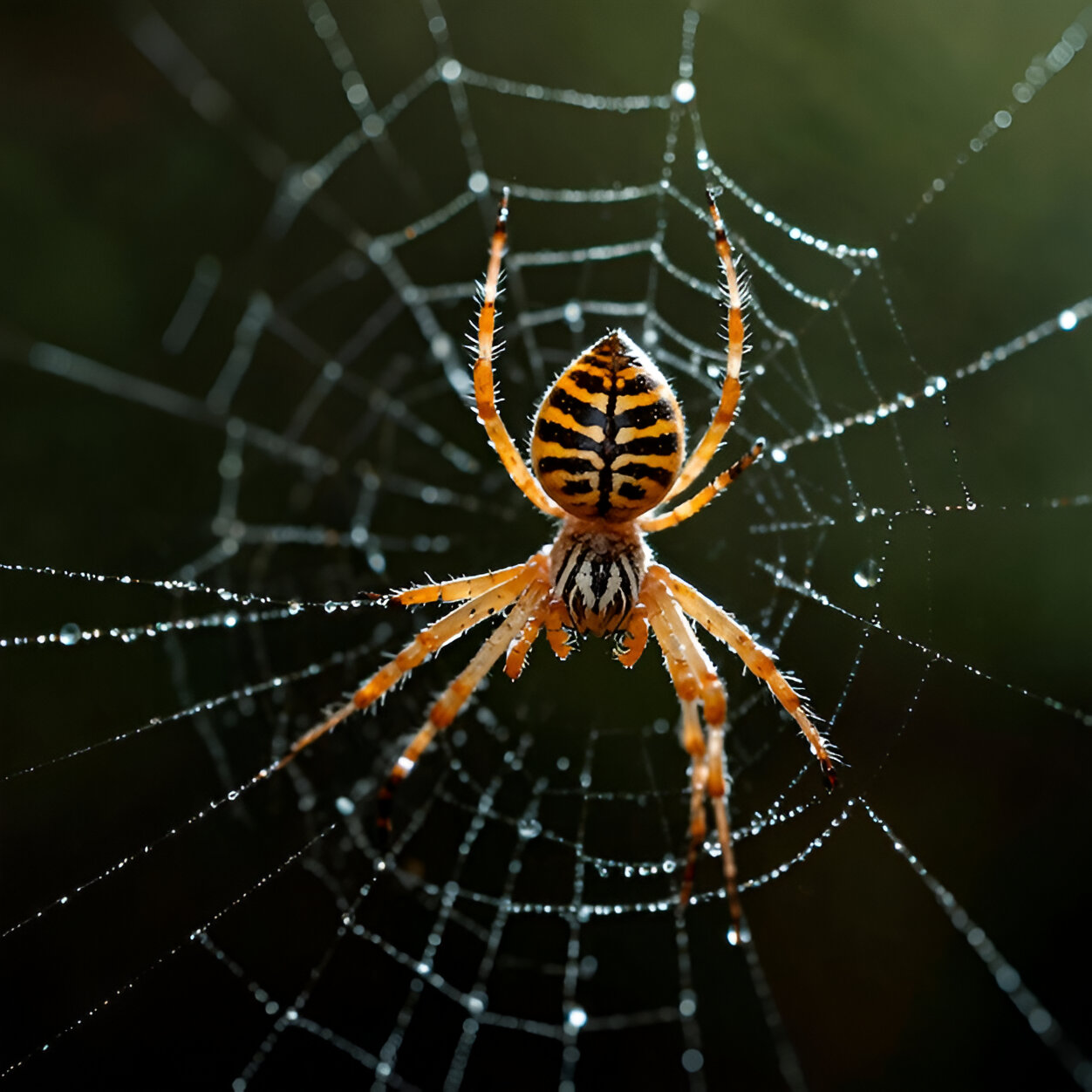
Typically pesticide control is difficult unless you see the spider and are able to spray it. If you spray one, it will be killed only if the spray lands directly on it; the spray residual does not have a long-lasting effect. This means a spider can walk over a sprayed surface a few days (and in many cases, a few hours) after treatment and not be affected. Control by spraying is only temporary unless accompanied by housekeeping. It is just as easy and much less toxic to crush one with a rolled up newspaper or shoe. Sticky traps offer a noninsecticidal way to remove them from your home as long as you can place the traps where pets and curious children can’t tamper with them.
Unlike mosquitoes, spiders do not seek people in order to bite them. Generally, a spider doesn’t try to bite a person unless it has been squeezed, lain on, or similarly provoked to defend itself. Moreover, the jaws of most spiders are so small that the fangs cannot penetrate the skin of an adult person. Sometimes when a spider is disturbed in its web, it may bite instinctively because it mistakenly senses that an insect has been caught. The severity of a spider bite depends on factors such as the kind of spider, the amount of venom injected, and the age and health of the person bitten. A spider bite might cause no reaction at all, or it might result in varying amounts of itching, redness, stiffness, swelling, and pain-at worst, usually no more severe than a bee sting. Typically the symptoms persist from a few minutes to a few hours. Like reactions to bee stings, however, people vary in their responses to spider bites, so if the bite of any spider causes an unusual or severe reaction, such as increasing pain or extreme swelling, contact either a physician or hospital, Sometimes a person may not be aware of having been bitten until pain and other symptoms begin to develop. Other species of arthropods whose bites or stings may be mistaken for that of a spider include ticks, fleas, bees, wasps, bedbugs, mosquitoes, the cone nose (kissing) bug, deer flies, horse flies, and water bugs.
Spiders resemble insects and sometimes are confused with them, but they are arachnids, not insects. Spiders have eight legs and two body parts-a head region and an abdomen. They lack wings and antennae. Although spiders often are found on plants, they eat mainly insects, other spiders, and related arthropods, not plants. Most spiders have toxic venom, which they use to kill their prey. However, only those spiders whose venom typically causes a serious reaction in humans are called “poisonous” spiders.
The Black widow is the most common harmful spider in Southern California. Venom from its bite can cause reactions ranging from mild to painful and serious, but death is very unlikely and many symptoms can be alleviated if medical treatment is obtained. Anyone bitten by this spider should remain calm and promptly seek medical advice; it is helpful if the offending spider can be caught and saved for identification. The typical adult female black widow has a shiny black body, slender black legs, and a red or orange spot in the shape of an hourglass on the underside of the large, round abdomen. Only the larger immature female and adult female spiders are able to bite through a person’s skin and inject enough venom to cause a painful reaction.
The Brown Widow is tan or cream-colored and has the same red or orange hourglass mark on the underside. The brown widow is suspected to have evolved in Africa although it was first described in South America, which adds confusion as to where it might have originated. The Brown Widow Spider is a tropical and subtropical spider having established populations in Hawaii, Florida, some Caribbean Islands, and parts of Australia, South Africa, Japan, and Cyprus. In North America, the Brown Widow Spider was restricted for many decades to the Florida peninsula. However, around the year 2000, it started showing up in other Gulf Coast states. Brown widows are now known from Texas, Georgia, South Carolina and California. The first specimens in california were collected in Torrance in 2003. After that, the spider was found with greater frequency in Riverside and San Diego counties.Webs and Egg Sacs. The web of the black and brown widow is an irregular, tough-stranded, sticky cobweb mesh in which the spider hangs with its underside up. During the day it often hides under an object at the edge of the web or stays in a silken retreat in the center. The black widow may rush out of its hiding place when the web is disturbed, especially if egg sacs are present. The egg sack are mostly spherical, about 1/2 inch long and 5/8 inch in diameter, creamy yellow to light tan in color, opaque, and tough and paper like on the surface. A female may produce several egg sacs. Tiny, young black widows, which are nearly white in color, disperse to new locations by ballooning and infest new areas. The Brown Widows egg sack differs from the black widows. The egg sack of the brown widow will has little spikes.
Where the Spiders Live. Black widow spiders occur in most parts of Southern California. They and their associated webs usually are found in dark, dry, sheltered, relatively undisturbed places such as among piles of wood, rubbish, or stones; in culverts, hollow stumps, and old animal burrows; in garages, sheds, barns, crawl spaces, utility meter boxes, and outhouses; and sometimes among plants. The Brown widow nest will occur in more open areas. People are most likely to be bitten when they disturb the spider while they are cleaning out or picking up items in such places. A sensible precaution is to always wear gloves and a long-sleeved shirt when working in areas that have been undisturbed for a time and where there are good hiding places for spiders.
Recluse spiders include the well-known brown recluse spider which does not occur in California. While the brown recluse has occasionally been brought into Southern California in household furnishings, firewood, and motor vehicles, it does not reside in the state. However, populations of another recluse spider, the Chilean recluse spider, were found in Los Angeles County in the late 1960s. In its native to Chile and its bite is said to be more toxic to humans than the brown specie. The native recluse spider of California is found in the desert regions of southern California and neighboring states. Its bite can cause problems, but it is not as toxic as that of the Chilean recluse. In any case, bites from the desert recluse are rare and no bites from the Chilean recluse have ever been recorded in California despite its presence in heavily populated urban areas. A unique feature of recluse spiders is their six eyes arranged in pairs in a semicircle, which can be seen with the use of a good hand lens. Most other spiders have eight eyes.
All recluse spiders make large, irregular, flattened, cobweb-type webs with thick strands extending in all directions. These spiders avoid light, are active at night, and tend to build their webs in out-of-the-way places. Chilean recluse spiders may be found indoors in boxes, in corners, behind pictures, in old clothing hanging undisturbed, and in other similar places. Desert recluse spiders appear outdoors where they may be found under rocks or wood.
Sit-and-wait predators feed during the day and night on the ground in most types of vegetation, including low-growing plants and trees. Spin funnel-shaped webs, often with several-inch-wide, flat extension covering plants or soil. The spider waits in the hole of its web. When it detects vibrations from an insect that flew or walked into the web, the spider runs out, captures and bites the prey, then carries it back into the funnel to be eaten. Webs on low vegetation become conspicuous in morning light after collecting dew.
Feed on insects that fly, fall, or are blown into web. Elaborate silken webs are spun in concentric circles. Spider lings often make symmetrical webs; mature spiders may spin a more specialized design that is helpful in identifying certain species. The spider rests at the center of its web or hides in a shelter near the edge, waiting for prey to become entangled. Orb weavers generally have poor vision and rely on web vibrations to locate and identify prey.
Stalk and capture prey that is walking or resting on surfaces. They spin silken tubes or sacs under bark, among leaves, and in low plants or on the ground, where they hide during the day or retreat after hunting. Commonly are nocturnal, medium-sized, pale spiders with few markings.
Prey on insects that fall, walk, or land in their web. They produce sheet like webs on the surface of plants or soil and are common in some field and vegetable crops
Prey on insects that are walking or resting on the ground. Actively hunt in the open during the day and night, often observed on the ground in litter and on low vegetation. Can occur in burrows and under debris on soil. Instead of spinning webs to catch prey, make a small, thick web where they rest. They have long hairy legs. They are usually black and white or strongly contrasting light and dark, which can make them difficult to discern unless they are moving.
Stalk and capture resting or walking insects. Active hunters with good vision. Most have spiny legs and a brightly colored body that tapers sharply toward the rear.
Day-active hunters in plants or on the ground. They make no web; instead they stalk and pounce on prey by jumping distances many times their body length. Jumping spiders have a distinctive pattern of eyes in three rows: They usually have an iridescent, metallic-colored abdomen and black carapace
Feed on insects that walk or fly into their webs. Almost always found hanging upside down by their claws in irregularly spun, sticky webs, waiting for prey. The spider is usually concealed in a corner of the web, in a silken tent, or behind debris. This group includes the black widow spider, which produces relatively thick silk that feels rough and sticky. They generally have soft, round, bulbous abdomen and slender legs without spines.
Stalk and capture insects walking or resting on surfaces. Diurnal hunters that do not spin webs. Front two pairs of legs are enlarged and extend beyond the side of their flattened body, making them look like tiny crabs.
In addition to the species mentioned above, there are only a few other species of spiders in Southern California that may on occasion bite humans. (Remember, if the bite of any spider causes an unusual or severe reaction, contact a physician). One kind is the red and black jumping spider and may bite if it is disturbed, but the bites are usually not serious. The female spiders are black with red on the top side of the abdomen whereas the males are all red. long. Tarantulas are long-lived spiders that occupy burrows in the ground during the day but often come out at night to hunt insects near the burrow. They commonly are feared because of their large size and hairy appearance. Some poisonous tarantulas occur in tropical parts of the world, but the bites of California tarantulas are not likely to be serious-at worst, they are similar to a bee sting. However, because of the variety of tarantulas sold in the pet trade industry, there is a spectrum of venom potencies among these creatures.
One spider frequently found indoors in Riverside & San Diego Counties is the common house spider which makes a cobweb in corners of rooms, in windows, and in similar places. Another is the marbled cellar spider. Various kinds of small hunting spiders may wander indoors and occasionally, rather large, hunting-type spiders are discovered in homes or garages. Often these are fully grown wolf spider or tarantula males that have reached maturity and are searching for females. When these spiders are wandering, one or more may accidentally get indoors. New houses and other structures in developments may be invaded by wolf spiders that have lost their usual outdoor living places. The more insects that exist inside a building, the more likely it is to have spiders living there. Usually spiders are most abundant in fall following the first few rains of the season. Immature and adult female burrow-living spiders sometimes wander for a time during the rainy season if they have had to abandon wet burrows.
Guys came on time did their job in a very professional way and we are very happy with their service.
Company is on top of their game David showed up to get are gophers. came out three days in a row haven’t seen a go for since
Joseph is a great ambassador for Wheeler's pest control, and a shout out to Daniel for dealing with my crazy schedule. Thanks guys!
A local business that everyone should support. All techs are knowledgeable, professional! FYI, they are also great w/ eradicating gophers as well!!